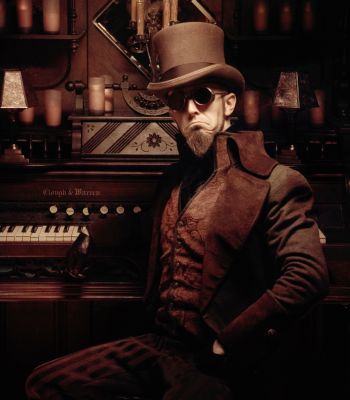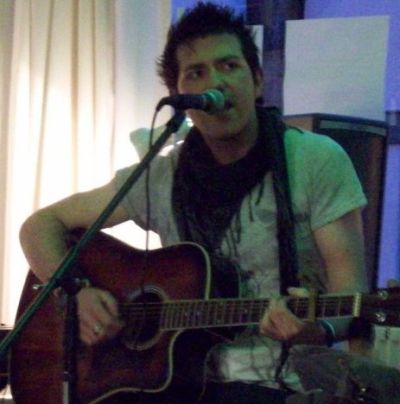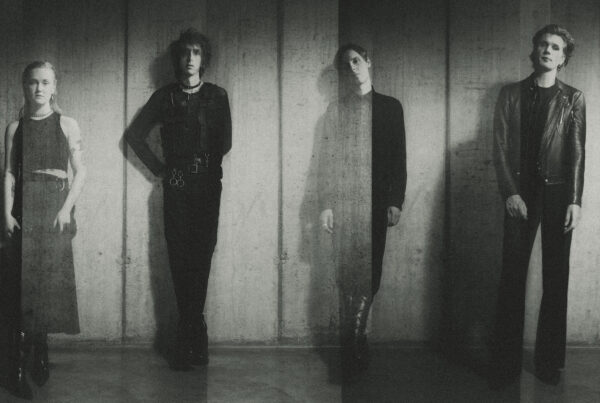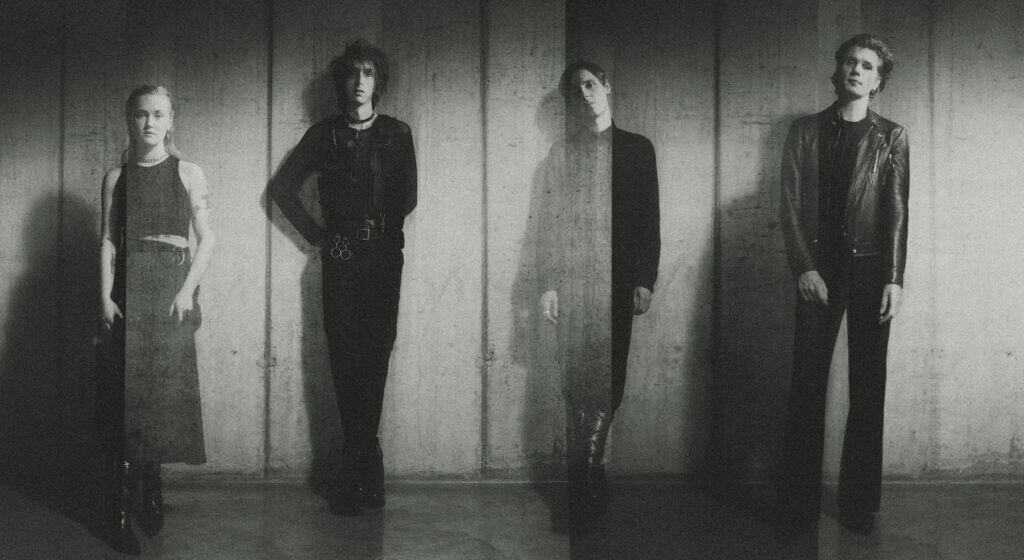Picture the scene: you’ve just escaped the clawing breeze of the November night time, and descended into the recesses of the local venue. You’re greeted by the usual odour of the previous night’s gig – stale beer, old sweat and a top note of spent excitement.

“I want to go ahead of Father Time with a scythe of my own” – H. G. Wells
There is to everything in these pre-gig moments a special kind of quiet. The voices of the throng swirl around the room, and the usual selection of rock jukebox favourites pummels the air, but everything is muted. A thick blanket of expectation muffles the sound, and every pair of eyes makes the occasional dart to the abandoned instruments standing patiently on the stage.
It feels much like any other show you’ve been to this year; that is until you notice the gentleman stood next to you. He is wearing what appear to be a nineteenth century pith helmet and the largest pair of goggles you’ve ever seen. As you let your eyes traverse the venue it becomes overwhelmingly apparent, from the number of cravats, riding trousers, waistcoats, frockcoats, safari jackets, preacher boots, bodices, and canes that you are the only person who doesn’t look as though they’ve just stepped out of the ‘Tonight, Tonight‘ video by Smashing Pumpkins. Even those abandoned instruments look as though they’ve been torn straight from the smoke-scented pages of a Robert Louis Stevenson novel.
Welcome to the world of nuts, bolts, and big-ass boilers. Welcome to steampunk.
When author K. W. Jeter coined the term steampunk it is unlikely that he realised he was supplying a name to what would become a huge and passionate subculture. Though steampunk now has its sooty fingers in facets as diverse as music, fashion and film, its origins are firmly rooted in literature.
The term itself is a direct response to the term cyberpunk, which was used to describe works in science fiction literature (by the likes of William Gibson, and Bruce Sterling) which combined high technology and extreme low-lives. To describe steampunk in the most simplistic way then would be to say that where cyberpunk used ultra high-tech electronics to envisage its futures, steampunk uses a Victorian aesthetic to create its technological mysteries. Gone is the lush chrome and fibre optic dance of electronic lighting, instead we have brass and wood, and everything is powered by coal and steam. Instead of the glamour of high-speed dog fights involving fighter planes and spacecraft, we have the fragile elegance of hot air balloons and zeppelins. Think of the world created by Alan Moore for his ‘League of Extraordinary Gentleman‘, or the dystopic metropolis envisioned by China Mieville in Perdido Street Station. These are literatures inspired by the nineteenth century fantasies of Jules Verne, H.G. Wells, and Robert Louis Stevenson, asking the questions: “What if we never discovered the benefits of electricity? What if we still ran on steam?”
In film there have been a few notable examples of the genre. The biggest in budget (and lowest in all other aspects) was the over inflated sack of hot air and bluster, which left everyone rather empty in the coal cellar – ‘Wild Wild West‘ with Will Smith. A better example comes from Japan in the form of ‘Steamboy‘, an anime thrill-ride from the makers of cyberpunk classic ‘Akira‘. Then there is Doc Brown‘s iconic time-travelling steam-train from ‘Back To The Future – Part III‘ (it’s no coincidence that his boys are introduced as Jules and Verne).
Music
– Robert Louis Stevenson
Bands in the same sub-genres of music are usually identified by the similarities of their sound, for example we can all identify a band we’d call thrash; a band we’d call screamo; a band we’d call metalcore etc. However, with bands happily raising banners in the name of steampunk you’ll find dizzying diversity.
From the roguish punk rock of The Men That Will Not Be Blamed For Nothing, fronted by Cpl Gerhard Heintz. Their first album: ‘Now That’s What I Call Steampunk Vol 1‘, teems with nineteenth century inspired tales of grizzled soldiering, and romantic odes such as “I love a girl in goggles”. Equally worthy of note is the mad scientist Dr. Steel, who uses his mix of industrial hip-hop and jazz as part of his diabolical plan to take over the world. British band Ghostfire specialise in a kind of warped smokey burlesque, whilst Abney Park can most readily be described as electro rock at its most moody.
The diversity of steampunk is a massive part of its smog-stained appeal, for every band you can’t quite get your cane tapping to, there will be at least a couple more who really get your pith helmet nodding. If ever there was a benefit of living in an age where all it takes is a click of a mouse to get an idea of a bands sound, then it’s here. Surf around, see what’s out there and find the steampunks who fit your brass mp3 player the best.
For more information on this growing and ever-chugging scene why not check out The Clockwork Cabaret radio show, and Steampunk magazine which is now on its seventh issue. Steampunk is an ahistorical, anachronistic, smog-spewing monster and it’s picking up speed.
Now, pass me my goggles sir, for I have a fancy I should enjoy a trip in my balloon!
For more information on steampunk, click the links.
Steve Nash







